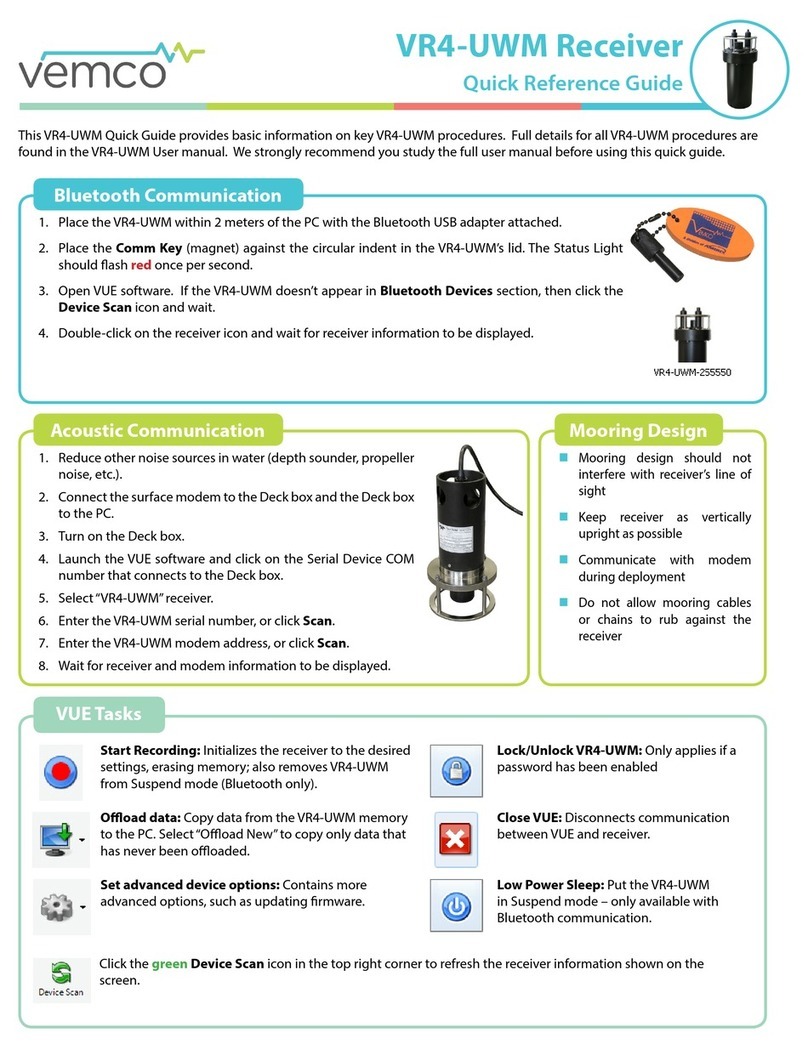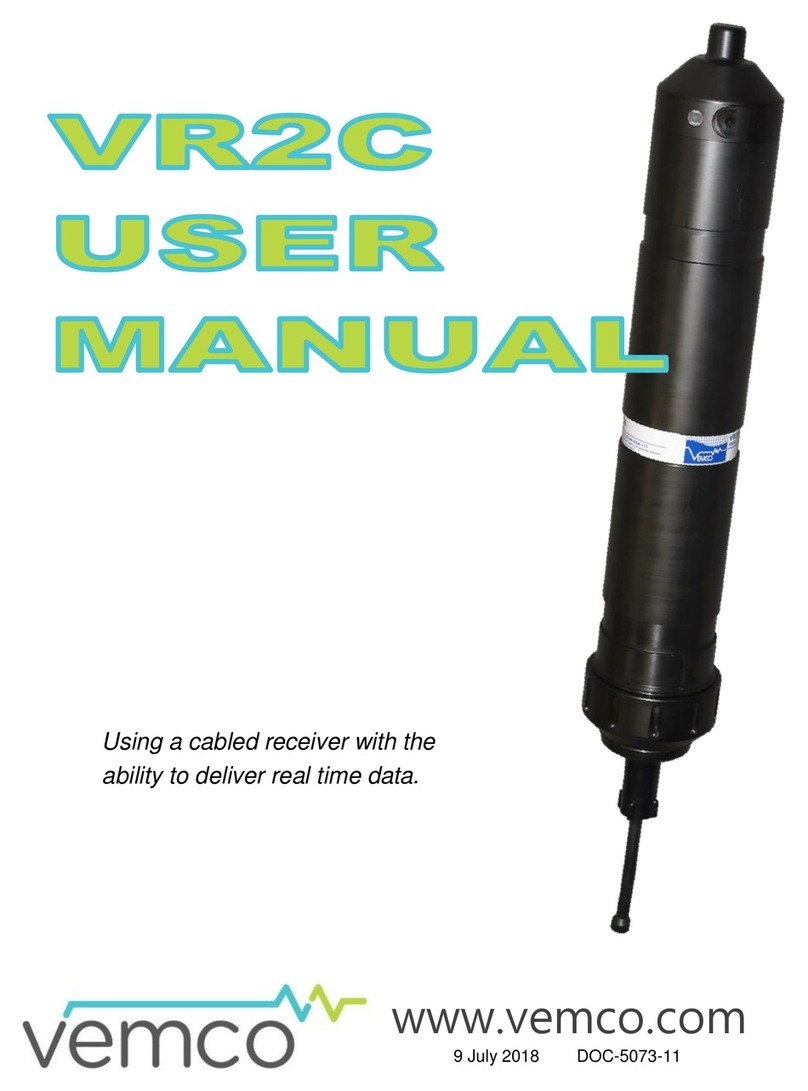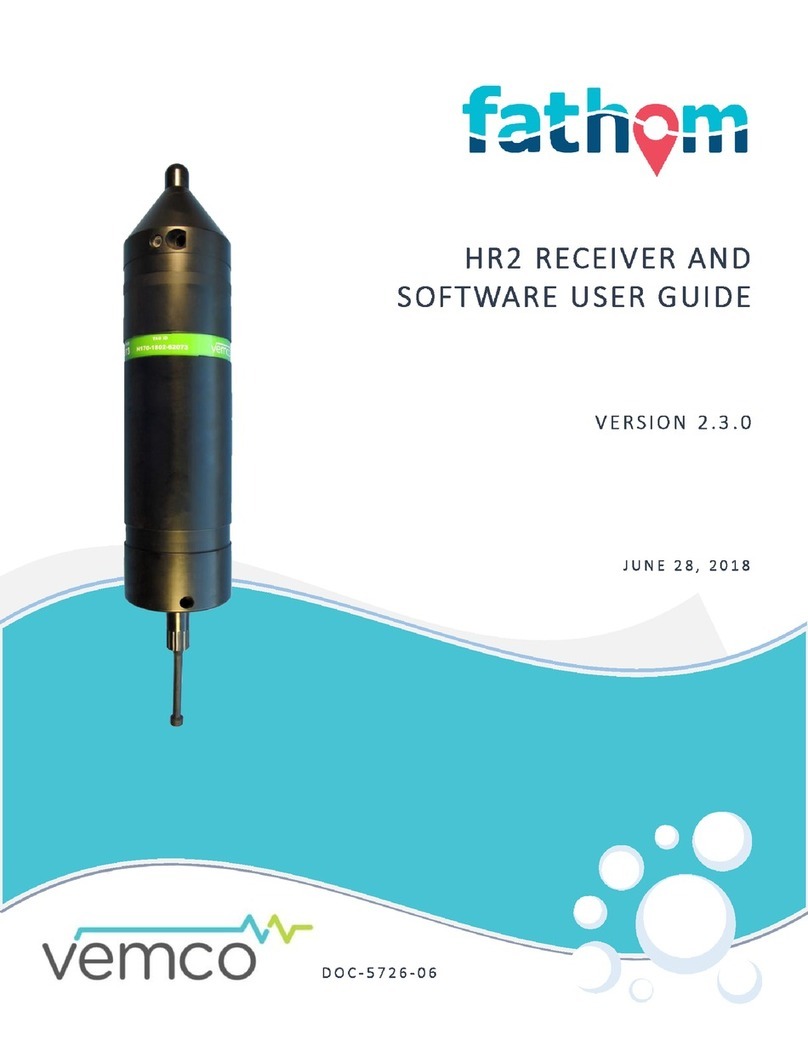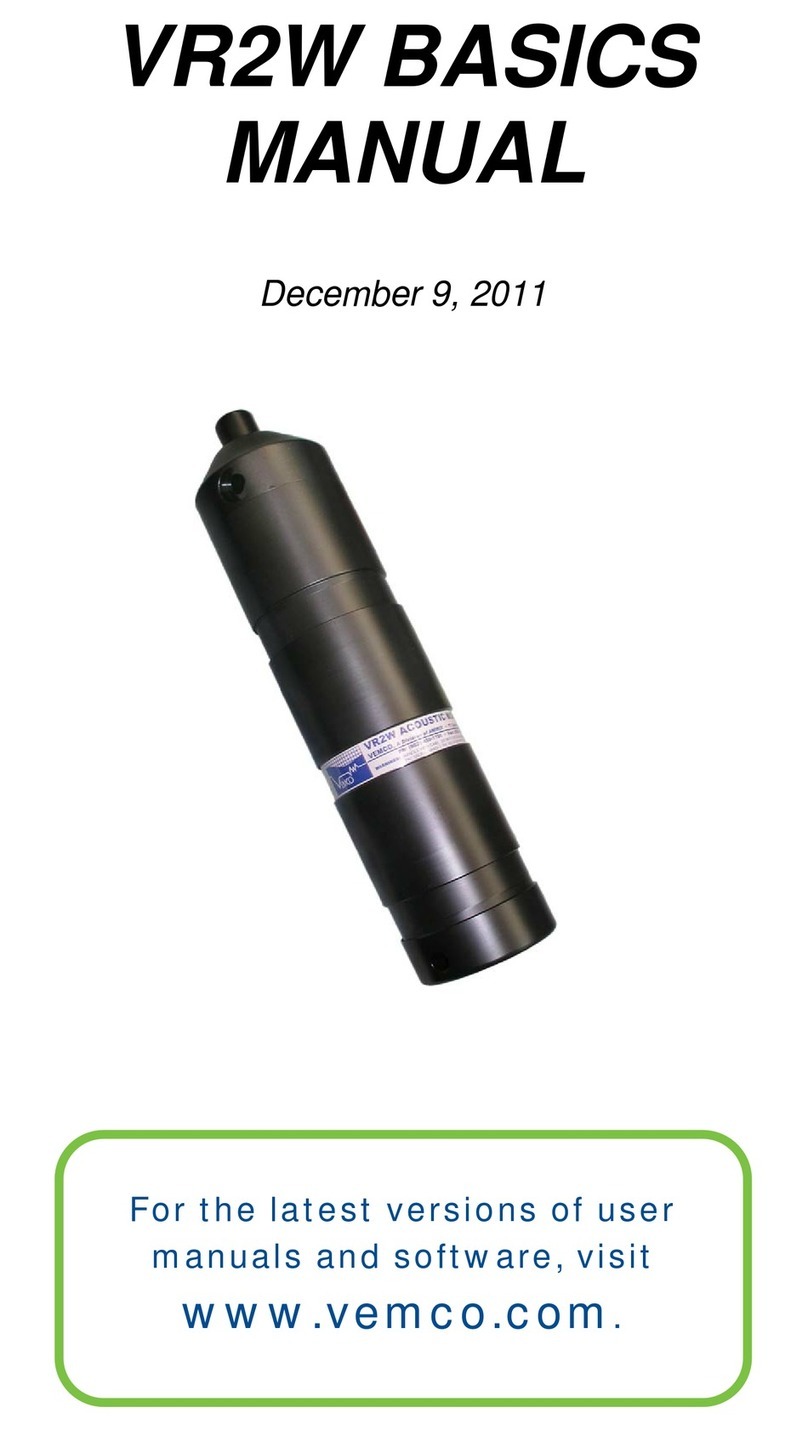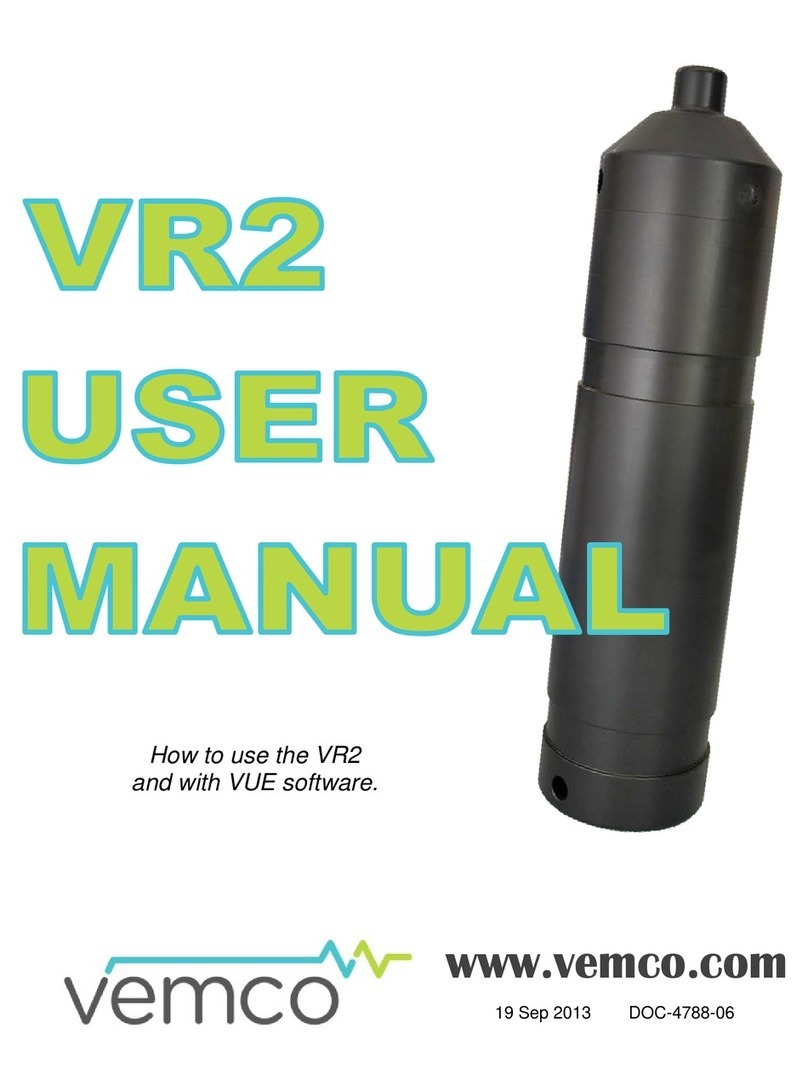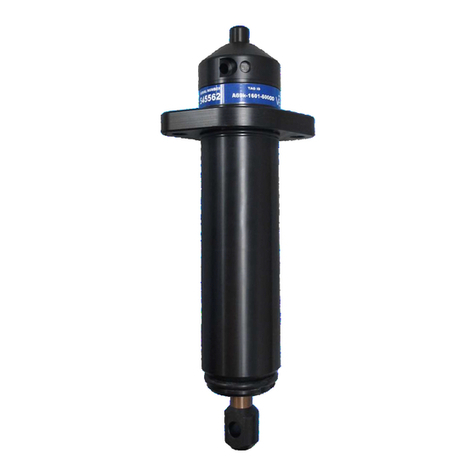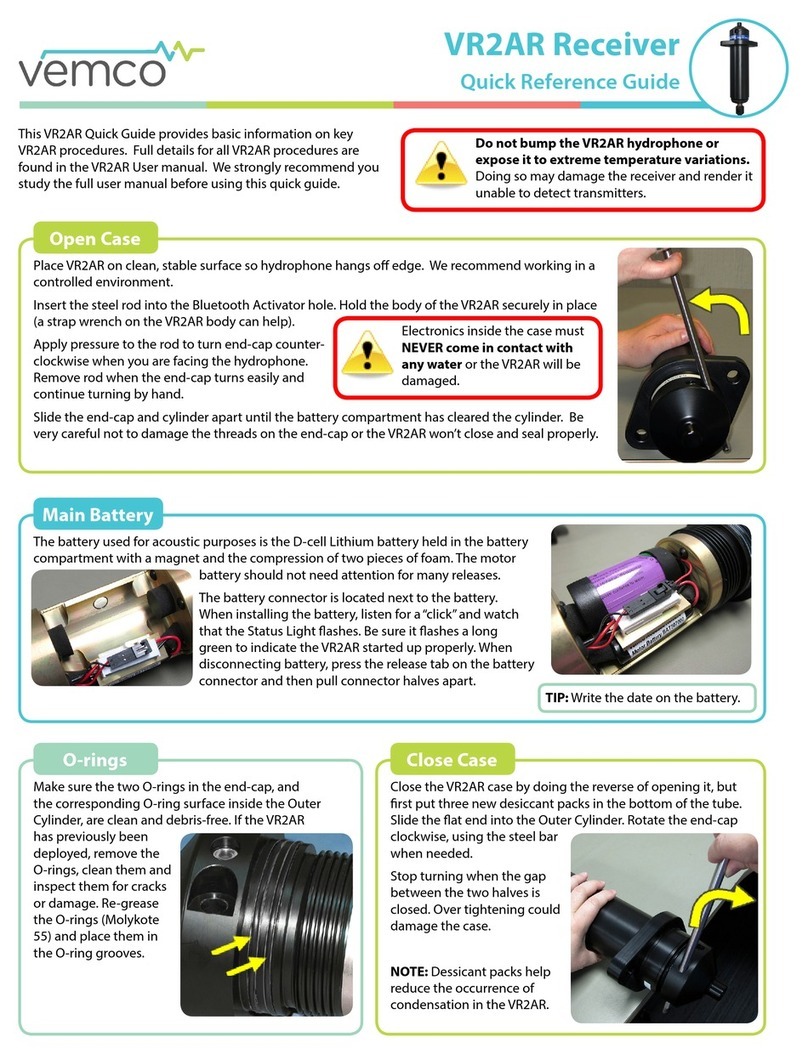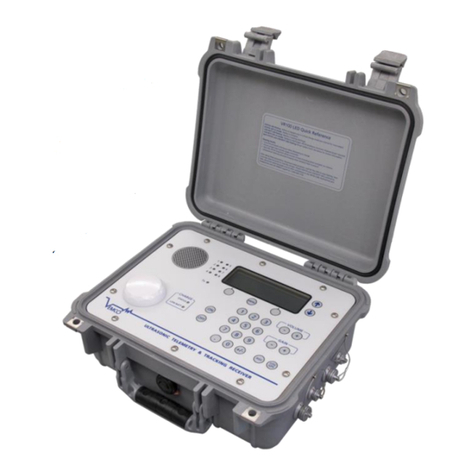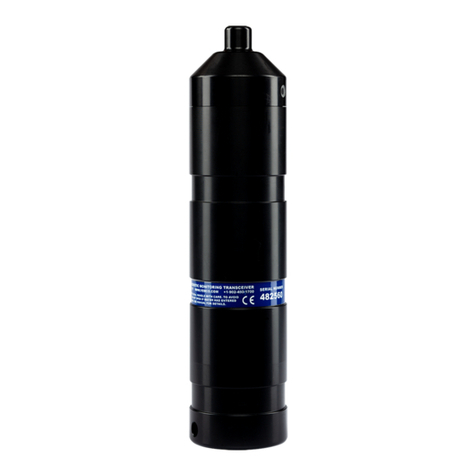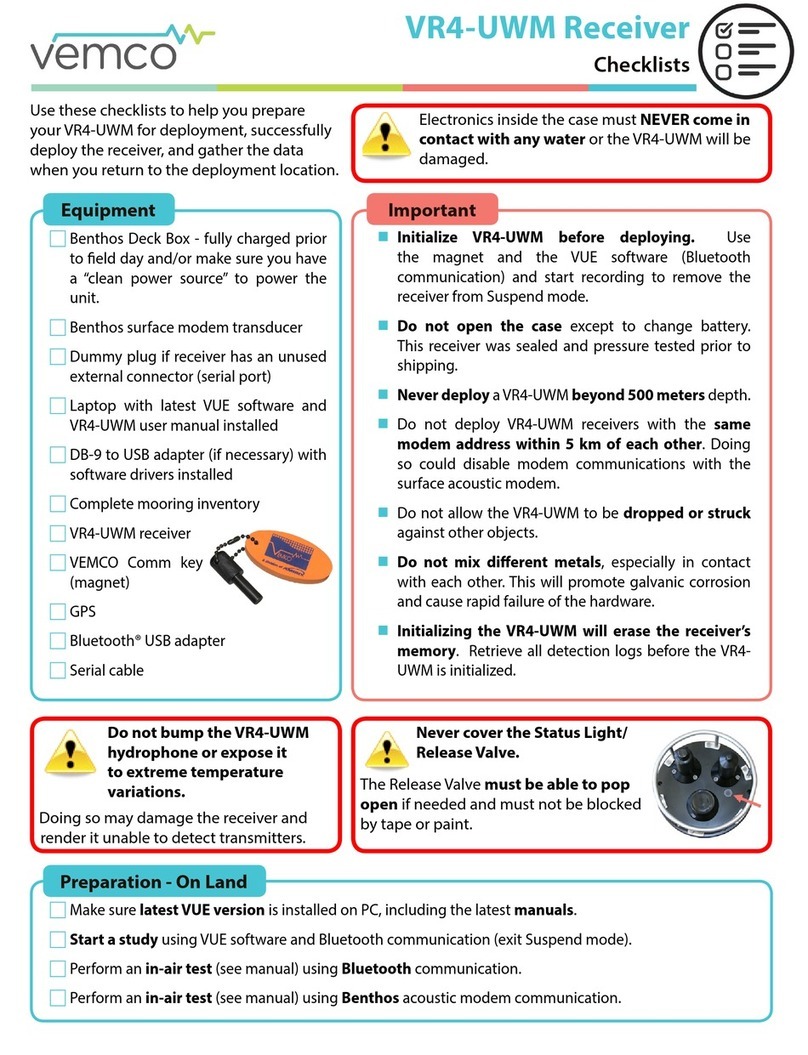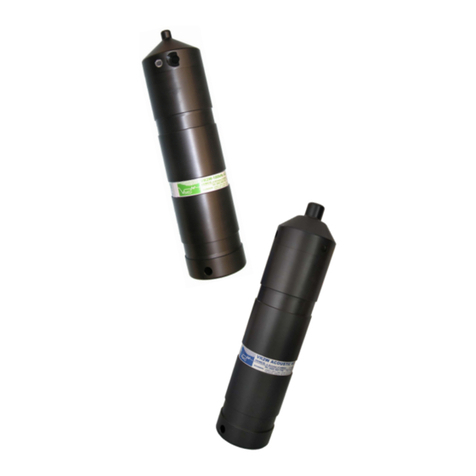Vemco VR2Tx User manual

Requires the use of the
latest VUE software
15 March 2019 DOC-5397-11
www.vemco.com

IMPORTANT SAFETY INFORMATION
At VEMCO, we make every effort to ensure all of our products are as safe as possible. However,
some hazards are unavoidable when deploying equipment underwater.
Your safety is important to us, so please read this list of cautions carefully, and follow the directions
below.
Case Pressurization
If a case leaks underwater, the inside pressure will increase to match the pressure at that depth.
This extra pressure will release as the unit is brought to the surface; however, if the leak is small,
that pressure release will be very slow. This will result in the case still being highly pressurized at
the surface.
Such a case can fly apart with explosive energy and represents a serious safety hazard.
Battery Breach
Lithium batteries contain chemicals that represent a serious health hazard –particularly
when combined with water.
Most VEMCO receivers and acoustic releases use this type of battery. A battery breach can occur if
a VEMCO receiver or acoustic release becomes damaged and water gets into the internals.
In addition, the reaction of the released chemicals with water in the sealed case can lead to case
pressurization, which could be explosive.
Safety Features
VEMCO receivers and acoustic releases that are designed to be deployed at depth may be
equipped with a pressure release that will activate when internal pressure reaches a certain level
above external pressure. This mechanism can fail if a receiver or acoustic release has been
damaged or if the release is blocked or fouled.
More details regarding specific receivers or acoustic releases can be found in the corresponding
user manual.
IMPORTANT
Throughout this document,
read all warnings and cautions
before proceeding
with next steps in procedures and using the product.

IMPORTANT SAFETY INFORMATION
What to Do?
1. Employ safety procedures required by the country or state in which you are working.
2. Always use protective clothing, gloves and glasses, and work in a well-ventilated area.
3. Treat any receiver or acoustic release pulled from the water as if it has the potential to be
pressurized or contain a breached battery. Point it away from yourself and others.
4. If a receiver or acoustic release shows any signs of internal pressure or breach, do NOT
attempt to open it. Handle it very gently and store it in an isolated location, then call
VEMCO Customer Support (see section 9.2 for contact information).
Such signs may include:
•Popped or bulging pressure release
•Air or water seeping from seams
•Signs of internal water (e.g. sloshing sound)
•Excess weight
•Signs of physical damage
If a receiver or acoustic release shows signs of damage or heavy biofouling, handle with
extreme caution, and use all necessary protective equipment.
WARNING
If the VR2Tx is not used in the manner specified in this manual,
then the manufacturer's warranty protection may be voided.

Summary of Manual
This manual is intended to provide VEMCO users with the information they require to use the
VR2Tx receiver. VEMCO highly recommends that the user fully read the manual before using the
equipment or the VUE software.
Section 1: Introduction
Getting to know the VR2Tx receiver
Section 2: Getting started
Getting the VR2Tx ready, including powering the VR2Tx, opening and closing the case, and initial tests
Section 3: Communication
Talking to the VUE software, and how to use VUE with a VR2Tx
Section 4: Deployment
Important points to consider in a deployment plan and the most common attachment method
Section 5: Maintenance
How to care for the equipment and prepare it for storage, including removing the battery
Section 6: Additional Information
Additional information about the VR2Tx that is good to know but not mandatory for basic operations
Section 7: Common Questions
Answers to frequently asked questions related to using the VR2Tx receivers
Section 8: Troubleshooting
Solutions to common issues that may arise
Section 9: Appendices
For the latest versions of user
manuals and software, visit
www.vemco.com.

Table of Contents
1Introduction........................................................................ 1
1.1 System Overview................................................................................................................ 1
1.2 VR2Tx Case ....................................................................................................................... 3
2Getting Started .................................................................... 4
2.1 Open the VR2Tx Case........................................................................................................4
2.2 Install Battery...................................................................................................................... 7
2.3 Close the VR2Tx Case........................................................................................................9
2.4 Testing.............................................................................................................................. 11
2.4.1 In-Air Test................................................................................................................. 11
2.4.2 In-Water Test............................................................................................................ 12
3Communication...................................................................13
3.1 Installing the VUE software............................................................................................... 13
3.2 Connecting with Bluetooth ................................................................................................ 14
3.2.1 Using INTERNAL Bluetooth...................................................................................... 14
3.2.2 Using the EXTERNAL Bluetooth Adapter ................................................................. 14
3.3 Activate Wireless feature .................................................................................................. 15
3.4 Establish Bluetooth communication................................................................................... 16
3.5 Select Transmitter Options................................................................................................ 18
3.6 Select Logging Options..................................................................................................... 20
3.7 Create Watch Table.......................................................................................................... 22
3.8 Record mode.................................................................................................................... 24
3.8.1 Start a Study............................................................................................................. 24
3.9 Offload Data...................................................................................................................... 26
3.10 Disconnect communication with receiver...................................................................... 27
4Deployment .......................................................................28
4.1 Deployment Facts/Tips ..................................................................................................... 28
4.1.1 Mooring .................................................................................................................... 28
4.1.2 Spacing .................................................................................................................... 28
4.1.3 Biofouling.................................................................................................................. 28
4.2 Mooring Line Attachment.................................................................................................. 29
5Maintenance ......................................................................31
5.1 Battery Replacement ........................................................................................................ 31
5.1.1 Disconnecting and Removing Battery....................................................................... 31
5.1.2 Resetting the Battery Usage Indicator ...................................................................... 32
5.2 O-ring Care....................................................................................................................... 33
5.2.1 Remove O-rings ....................................................................................................... 33
5.2.2 Clean O-ring Surfaces.............................................................................................. 34
5.2.3 Install O-ring............................................................................................................. 36
5.3 Storage............................................................................................................................. 36
Other manuals for VR2Tx
2
Table of contents
Other Vemco Receiver manuals


